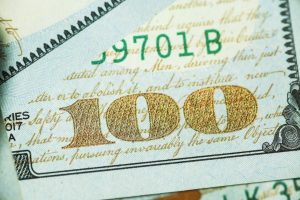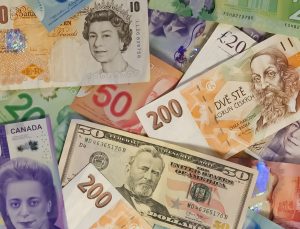Forex charts are an essential tool for traders who want to analyze and understand the current state of the forex market. They provide a visual representation of the price movements of currency pairs over time, allowing traders to identify trends, patterns, and potential trading opportunities. In this article, we will explain how to read a forex chart.
Understanding the Basics of Forex Charts
Before we dive into the details of how to read a forex chart, it’s important to understand the basics of how these charts work. Forex charts are typically displayed in a time-series format, with the X-axis representing time and the Y-axis representing price. Each point on the chart represents the closing price of a particular currency pair at a specific point in time.
Forex charts can be displayed in a variety of timeframes, ranging from one-minute charts to weekly or monthly charts. The timeframe you choose will depend on your trading style and strategy, as well as the level of detail you need to make informed trading decisions.
Types of Forex Charts
There are three main types of forex charts: line charts, bar charts, and candlestick charts. Each type of chart provides a different level of detail and information about the price movements of a particular currency pair.
Line Charts
Line charts are the most basic type of forex chart, displaying a simple line that connects the closing prices of a currency pair over time. Line charts are useful for identifying long-term trends but provide limited information about price movements within a specific time period.
Bar Charts
Bar charts display the opening and closing prices of a currency pair, as well as the high and low prices for a specific period of time. Each bar on the chart represents a specific timeframe, such as one minute, one hour, or one day. Bar charts are useful for identifying short-term price movements and can provide valuable information about market volatility.
Candlestick Charts
Candlestick charts are similar to bar charts but provide additional information about the price movements of a currency pair. Each candlestick on the chart represents a specific timeframe and includes the opening and closing prices, as well as the high and low prices. The body of the candlestick represents the difference between the opening and closing prices, while the wicks or shadows represent the high and low prices. Candlestick charts are useful for identifying trends, patterns, and potential trading opportunities.
Reading a Forex Chart
Now that we have covered the basics of forex charts and the different types of charts available, let’s dive into how to read a forex chart.
1. Identify the Currency Pair
The first step in reading a forex chart is to identify the currency pair you want to analyze. Forex charts typically display two currencies, with the base currency on the left and the quote currency on the right. For example, in the EUR/USD currency pair, the euro is the base currency and the US dollar is the quote currency.
2. Choose a Timeframe
Once you have identified the currency pair you want to analyze, the next step is to choose a timeframe. As we mentioned earlier, forex charts can be displayed in a variety of timeframes, ranging from one minute to weekly or monthly charts. The timeframe you choose will depend on your trading style and strategy, as well as the level of detail you need to make informed trading decisions.
3. Analyze the Price Movements
Once you have identified the currency pair and chosen a timeframe, the next step is to analyze the price movements on the chart. This includes identifying trends, patterns, and potential trading opportunities.
Trends
Trends are one of the most important factors to consider when analyzing a forex chart. Trends can be identified by looking at the direction of the price movements over time. An uptrend is characterized by higher highs and higher lows, while a downtrend is characterized by lower highs and lower lows. Identifying trends can help traders make informed trading decisions and determine the best entry and exit points for a trade.
Patterns
Patterns are another important factor to consider when analyzing a forex chart. Patterns can be identified by looking at the shape of the price movements over time. Common patterns include head and shoulders, triangles, and double tops or bottoms. Identifying patterns can help traders predict future price movements and determine potential trading opportunities.
Trading Opportunities
Once you have identified trends and patterns on a forex chart, the next step is to look for potential trading opportunities. This includes identifying key support and resistance levels, as well as potential entry and exit points for a trade. Traders can use technical indicators and other analytical tools to help identify potential trading opportunities.
Conclusion
In conclusion, reading a forex chart is an essential skill for any trader who wants to be successful in the forex market. Understanding the basics of forex charts and the different types of charts available is the first step in analyzing and interpreting price movements. By identifying trends, patterns, and potential trading opportunities, traders can make informed trading decisions and maximize their profits in the forex market.





